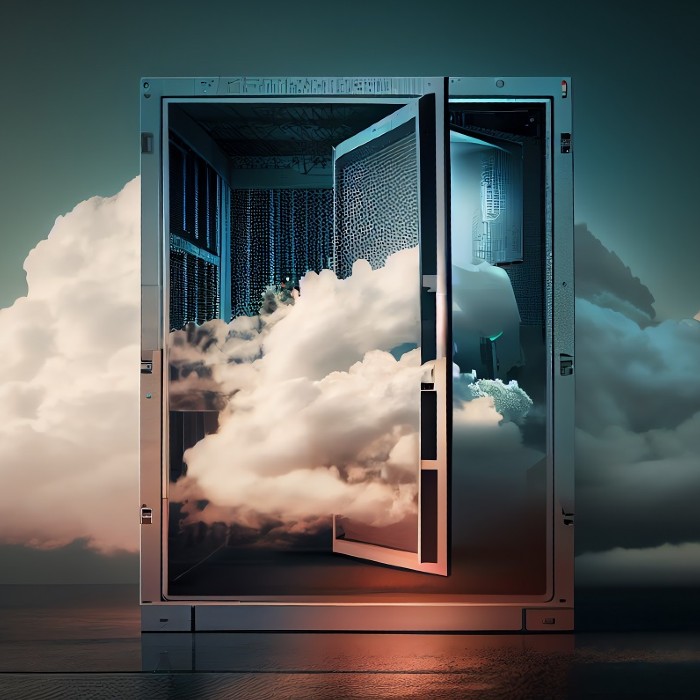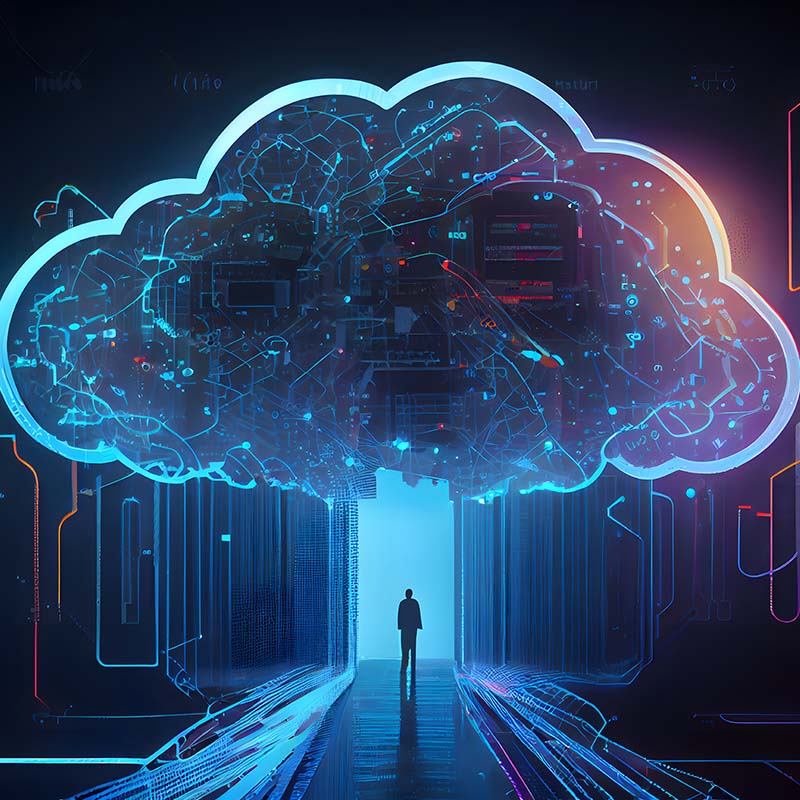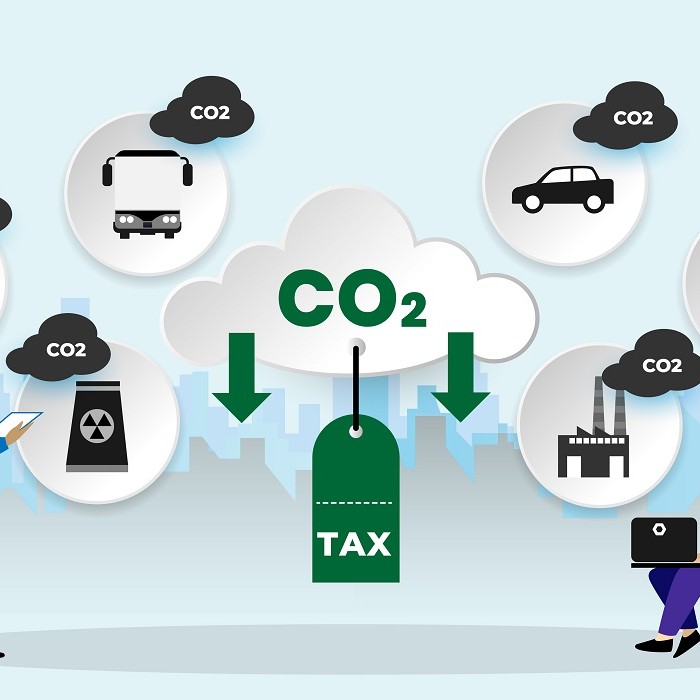A modern data center rivals the complexity of a living organism. Thousands of interconnected electrical devices pull in energy and return it to their environment through heat. Server stacks and the air conditioners that cool them crave so much electricity that data centers aren’t measured by physical space anymore. They’re measured in megawatts of power consumed.
“Data centers are a very crucial part of everyone's daily lives – all the applications that we have on our mobile phones and our desktops, all the websites that we visit come from a data center, said Harmail Singh Chatha, Nutanix’s senior director of global cloud operations, who calls data center his professional home.
Chatha calls Nutanix’s data centers “my babies,” though it’s hard to imagine a bassinette big enough to hold it. This object of his affection requires space and ample resources. A recent data center expansion consumes some 2 million watts of electricity.
“We’re constantly and consistently using electricity, so the power and cooling have to be always available, every second,” he said.
Chatha talked about his life in the data center in an interview with The Forecast. One of his primary responsibilities is to use hyperconverged infrastructure (HCI) and scalable hardware to build data centers that grow with business needs while reducing the environmental impact. Reliance on more and more computing resources goes hand in hand with the need to limit the impact on Mother Earth.
“Over the past two years, data center design has evolved significantly to meet the growing demands of digital transformation,” he said. “The focus has shifted towards more sustainable, energy-efficient designs aimed at reducing carbon footprint. The adoption of AI and machine learning-powered capabilities have also increased, optimizing operations and improving energy management.”
He said data centers are embracing energy-saving technologies, including innovative cooling systems and renewable energy sources, to decrease their environmental impact.
“The increasing trend of utilizing renewable energy sources like solar and wind power further underscores this commitment to reducing their carbon footprint,” he said.
He said this becomes more important all the time as demands for more computing keep ballooning. The latest demand on data centers is coming from rapid, widespread interest in generative AI and other AI capabilities.
“The goal is to create data centers that can grow with our digital needs while also being kind to our planet,” he said.
Building a ‘Hyper-Dense’ Data Center During the Pandemic
Chatha has led expansions of Nutanix’s data centers that illustrate some of the primary forces influencing the modern technology landscape. Nutanix’s data center primarily serves the company’s software developers, who build applications that virtualize the operations of physical devices like servers and switches.
Growth in the company’s global business required an expansion of its data centers.
“I had to trust my team on the ground,” Chatha told The Forecast.
“I had to rely on strong relationships with data center providers, contractors, cabling companies and the entire supply chain. But most importantly, I believed in our architectural designs for power, cooling and networking, and the ability for them to scale without requiring a re-architecture. This was no time to deviate from a tried and tested optimal design.”
Over two years, his team grew the data center by the equivalent of 2 megawatts of energy consumption, over 5000 square feet of space, 200 cabinets, 4600 servers, 400 switches, all requiring over 66,000 various types of cable connections. Supply chain constraints — people and equipment alike became scarce during the pandemic — slowed the expansion by several months in 2020 and 2021.
Chatha and his team custom-designed a “hyper-dense” data center expansion to meet the precise needs of Nutanix’s software suite, which combines compute, networking and storage into what’s called HCI, which emulates the operations of the underlying hardware. HCI has been a huge boon to application builders because it allows development environments to be spun up quickly and managed easily from a central dashboard. Servers and switches are software, so they don’t require technicians to tweak the settings on physical machines or route cables to new devices.
“Ultimately, it comes down to the software,” said Chatha. “We control the entire network through software itself. Because the software is getting more efficient, it's better able to utilize the underlying hardware, therefore we're able to push that lifecycle longer now through our software.”
That makes the data center as a whole more sustainable, as infrastructure has to be replaced a lot less frequently.
“Because they're so software defined, we don't have to go to the data center every day and we've got a lot of alerts set up for the data center as well,” said Chatha. “So if something does go wrong, a power PDU goes out, cooling is inefficient, we've got systems in place where we get alerts and we're able to act on those alerts remotely.”
These systems work together to make Nutanix data centers run more productively and minimize extraneous energy usage that can be harmful to the environment.
Nutanix’s hyper-dense data center design relies on tall racks (55 units vs. the old standard of 42 units), which cram extra processing power into each stack. Running HCI on these stacks helps optimize data center efficiency because it’s so much simpler to manage software digitally than to configure hardware manually.
Like data center scalers Amazon, Google and Facebook, any company building a data center today has a strong financial incentive to maximize the efficiency of their massive data centers. According to IT industry publication Data Center Frontier, a key issue going forward is climate change, which is altering the status quo in both real estate and energy sourcing.
“Data center operators have to maximize efficiency on every inch of data center space,” Chatha said.
Of course, making a data center more productive from a computing standpoint does not necessarily make it more energy efficient. That’s one of the biggest challenges for Chatha and data center designers worldwide.
Joining the Push for More Sustainable Data Centers
Sixteen years in the business have taken Chatha to a hundred data centers. As the principal designer of Nutanix’s data center, he supervises every detail: racks, switches, servers and cables in a rainbow of colors. Rows upon rows of lights blink green, blue, amber and red.
“Green means they're happy,” he said. Blue is fine, too. “It's the red ones you want to avoid. Anytime you see a red or amber color light, something has or is about to fail.”
Failure is not among the acceptable outcomes in an increasingly digital world that relies more heavily on data centers every day. But the demand for 99.999% uptime is generating unease among data center people like Chatha.
“The conversation is really changing around sustainability,” Chatha said. Data centers require vast quantities of electricity, much of it generated by burning fossil fuels. Technology companies like Nutanix are being pulled into the same debate as governments, politicians and climate activists.
“We have a number of customers reaching out to our sales folks saying, ‘what are you guys doing from a sustainability standpoint?’ ” Chatha added.
It’s not an easy question to answer because data center energy consumption varies widely from one installation to the next. Data centers in office buildings, for instance, are much less energy efficient than a purpose-built data center, whose environmental controls can be optimized to manage electricity consumption.
“People just need to give up the notion that ‘I need to touch my gear’,” he said. Privacy regulations, however, may still require on-site data centers, which may require enterprises to build distributed data center operations.
Looking to the Future of Data Centers
Chatha concludes that perhaps a couple hundred people on the planet share his in-depth knowledge and experience in data centers. It’s a good elite to be in: “There's a very limited number of people that actually operate data centers and get to be hands-on in data centers and understand how the internet works and how websites are powered,” he said. “And that's what really excites me.”
For Chatha, the virtualization of data center operations culminates decades of advances in software development.
“Servers are provisioned as code; instances are spun up as code,” Chatha said.
He said it’s now the age of the software-defined data center.
“That’s the mindset that everybody has to go into in this industry.”
So, where is the data center business going? More automation is on the way, Chatha predicts. His team considered deploying robots to Nutanix’s data center before the pandemic hit.
“We wanted a robot that can go around and monitor the environment,” he said.
Robots may do more data center tasks that are easy to automate. However, some complex jobs, like routing all the cables correctly, are difficult even for humans to get right.
“Ultimately, I think it'd be challenging to get robots to do everything in the data center,” he concluded.
Green data centers are now a business imperative as much as they are of environmental importance. By utilizing newer, more energy-efficient technologies, Nutanix is paving a way for a more sustainable future in the data centers that help run the modern world.
This is an updated version of the original article published on March 8, 2022.
Editor’s note: Learn about the different factors that can influence the environmental impact of IT systems using Nutanix solutions.
Tom Mangan is a contributing writer. He is a veteran B2B technology writer and editor, specializing in cloud computing and digital transformation. Contact him on his website or LinkedIn.
© 2024 Nutanix, Inc. All rights reserved. For additional legal information, please go here.









